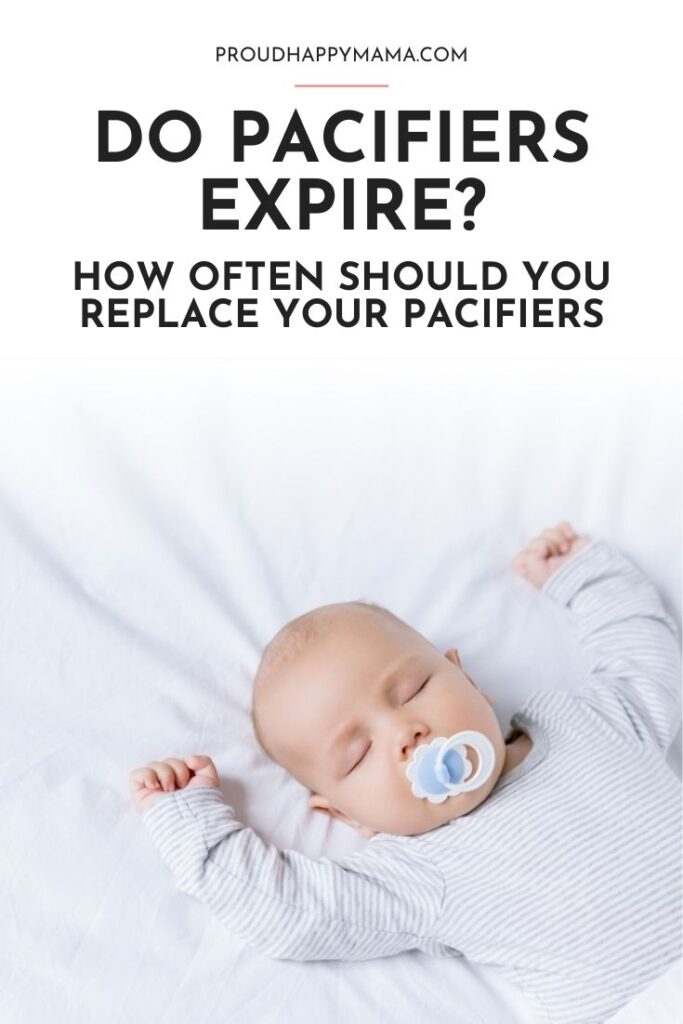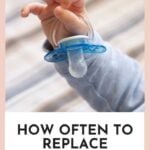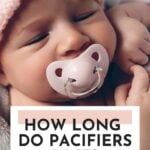Do Pacifiers Expire?
Wondering do pacifiers expire?
Or how often to replace pacifiers?
Then you’re not alone. It’s a common question among parents especially if you have a small stockpile of your baby’s favorite pacifier!
That’s why we put together this guide on how long do pacifiers last, so we can answer all those burning questions you may have on your child’s pacifier.
Here you’ll learn how do pacifiers go bad, how to check your baby’s pacifier, how to prevent your baby’s pacifier from becoming a hazard, and how often should you replace your pacifiers.
And while we are talking about old baby products, you might want to check out our guides on do car seats expire, do diapers expire, do baby wipes expire and do baby bottles expire?
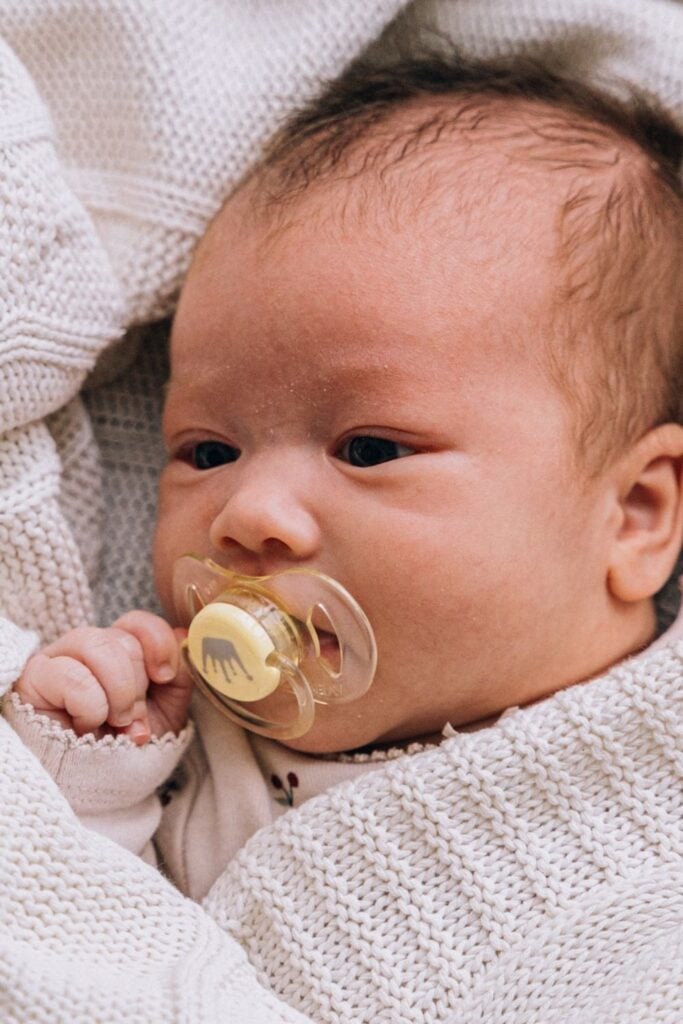
Do Pacifiers Expire?
This is a tricky one to answer as some manufacturers put expiration dates on pacifiers, while others do not.
Which can leave parents confused!
After all, how does a piece of silicone have an expiration date?
Expiration dates are put on products like pacifiers because eventually, the materials like silicone or latex will begin to break down.
When these break down the product can easily break apart and become a choking hazard. The expiration date on the product is an indication of when the manufacturer expects the materials to begin to break down even without use.
If your pacifier has an expiry date, it will be printed on the back of your packaging.
If you cannot find an expiry pacifier date, or even if you can, you will want to check for signs that it has gone bad prior to use.
How Do Pacifiers Go Bad?
When you think of expiration dates you are likely to think about food and how it begins to rot or taste bad over time. While your baby’s pacifiers won’t likely taste any different, they will begin to break down.
This breaking down can show simple outside signs of wear and tear like discoloration from heat and light exposure, thinned material, and even the formation of holes.
Pacifiers can hold a lot of germs simply from your baby’s mouth and from being sat down.
We often think of washing our baby’s pacifiers when they fall on the floor but there are other issues than just the part that goes on your baby’s mouth.
Pacifiers that are made of more than one part can easily get water inside during washing. This can lead to mold and bacterial growth.
In this case, you want to take every step possible to protect your baby.
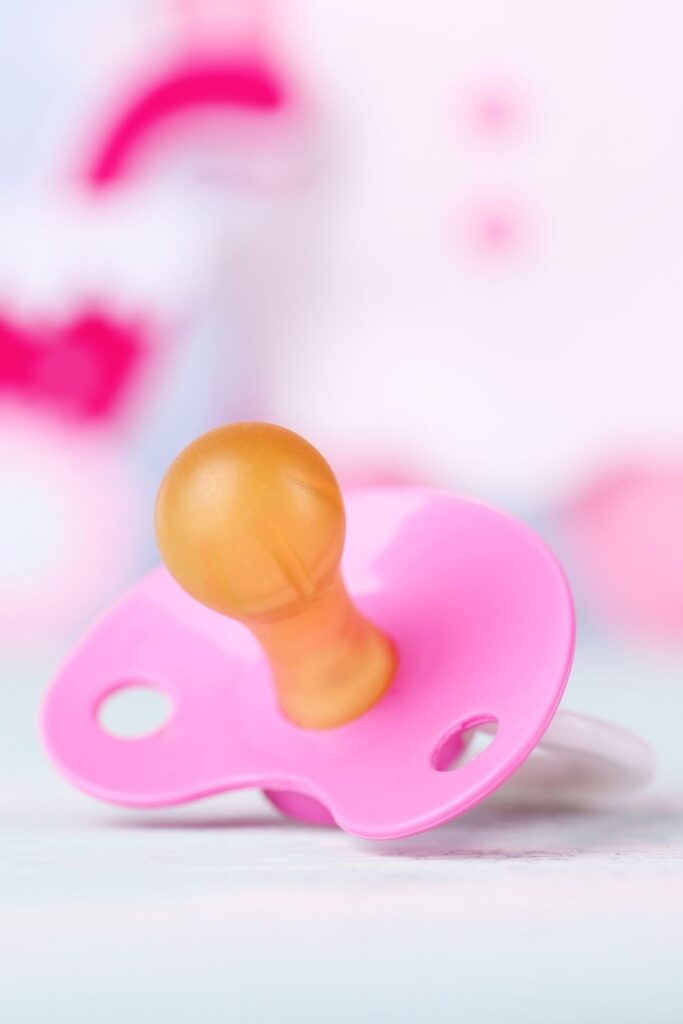
How To Check Your Baby’s Pacifier
When your baby’s pacifiers start to break down you may see holes start to form when you pull on the tip and stretch the pacifier from the base.
This will show hairline holes that are not yet visible when you do not perform this action.
When your baby sucks on a pacifier with these tiny holes they expand more and more until parts begin to break off.
These small bits of silicone or latex can be a choking hazard or even aspiration risk. This check should be performed every time you give your baby a pacifier.
When using pacifiers made of multiple parts, ensure you check for signs that water has not entered the inside of the pacifier.
You can check this by holding the pacifier up to the light after it has been washed checking for signs of water or condensation.
You should make these checks each time before you hand the pacifier to your baby.
How To Prevent Your Baby’s Pacifier From Becoming A Hazard
If your pacifier has received any damage and is showing signs like holes in the nipple or water inside any part of the pacifier you should toss out the pacifier right away.
These are signs that the pacifier has begun to go bad and break down.
The holes in your pacifier can lead to breaks that can quickly become a choking hazard.
Even if your pacifier is not showing signs of damage, to prevent your pacifier becoming a choking hazard ensure you move up pacifiers with your child’s age.
While it may not make sense to toss out a perfectly good pacifier just because your baby has gotten older this is important.
Pacifiers are designed to be much softer for newborns and allowing an older baby to use these pacifiers can lead to damage quicker. Softer pacifiers are not designed to handle the harder suck of a toddler or their sharp new teeth.
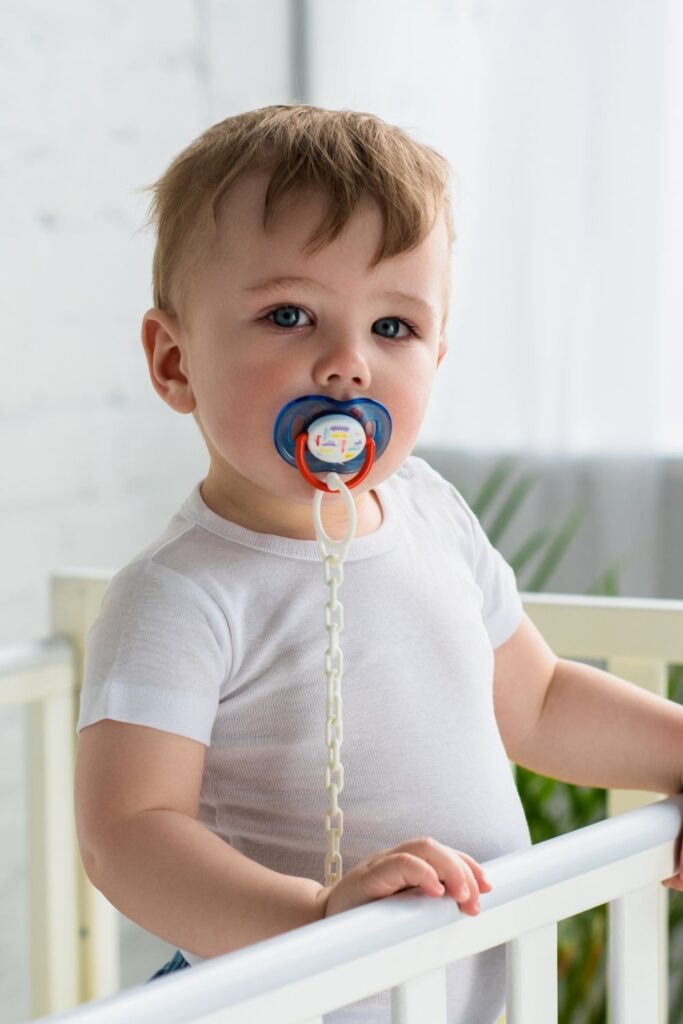
How Often Should You Replace Your Pacifiers?
Many parents are shocked by how fast they should be replacing their pacifiers. Regardless of the expiration date on the package of your pacifiers, they should be replaced at least every two to four weeks. This is because of the build-up of germs and bacteria and the natural wear and tear of the product.
The expiration date on the package your pacifier came with indicates how long the pacifier is good for while still sealed in the package, not experiencing everyday life around the house with your baby or toddler.
Whilst regularly cleaning and sterilizing pacifiers will help to keep germs away, regular replacements are vital as your pacifiers start to wear allowing for areas for germs and bacteria to become trapped and breed.
Even if a pacifier is not showing major signs of wear and tear you still want to replace them often.
This is because they are designed with a particular shape to be gentle on your baby’s jaw and teeth. As your babies use a pacifier the shape tends to change, and this can lead to dental and jaw alignment problems. If you notice a change in shape, it is best to replace the pacifier.
What Other Times Should You Replace Your Pacifier?
There are a few other times you should consider replacing your baby’s pacifier even if it seems fine to keep using.
If you leave your pacifier outside in the sun for a long period of time this can cause the materials to break down and lead to damage that can turn your baby’s pacifier into a choking hazard.
A pacifier that has spent a couple of days outside or in your car exposed to the sun, heat, and cold should be tossed when you find it to avoid anyone giving it to your baby and leading to an accident.
What If My Baby Is Attached To A Particular Pacifier?
It is common for babies to become attached to their favorite pacifier.
When this happens, we recommend stocking up on several of their favorites in various sizes.
Not only does it help make replacing easier but also helps to make your life easier in general when you have to option of simply grabbing another pacifier if one was misplaced.
Anything that can make life easier for parents is worth doing.
Final Thoughts On How Long Do Pacifiers Last
Whilst some manufacturers put expiry dates on pacifiers and others don’t, the fact remains that your pacifier won’t last forever and should be replaced regularly.
We hope this guide has been helpful in answering your questions on how long are pacifiers good for and how often to change pacifier.
And if you’re looking for more great guides, then check out these guides on how many pacifiers do I need, best pacifier for breastfed babies, best preemie pacifiers, and best pacifiers for newborns.
